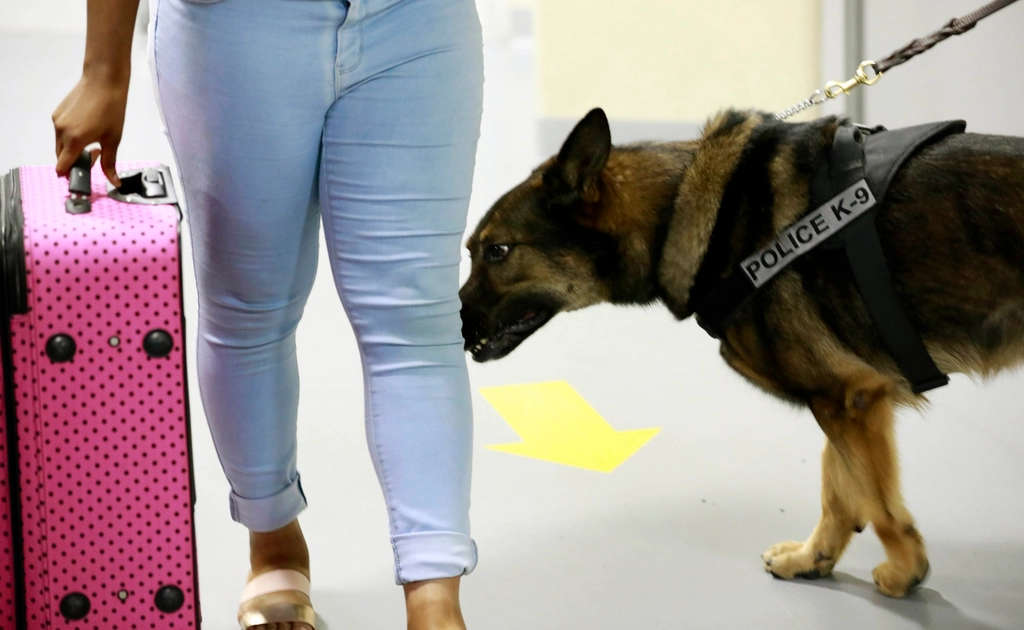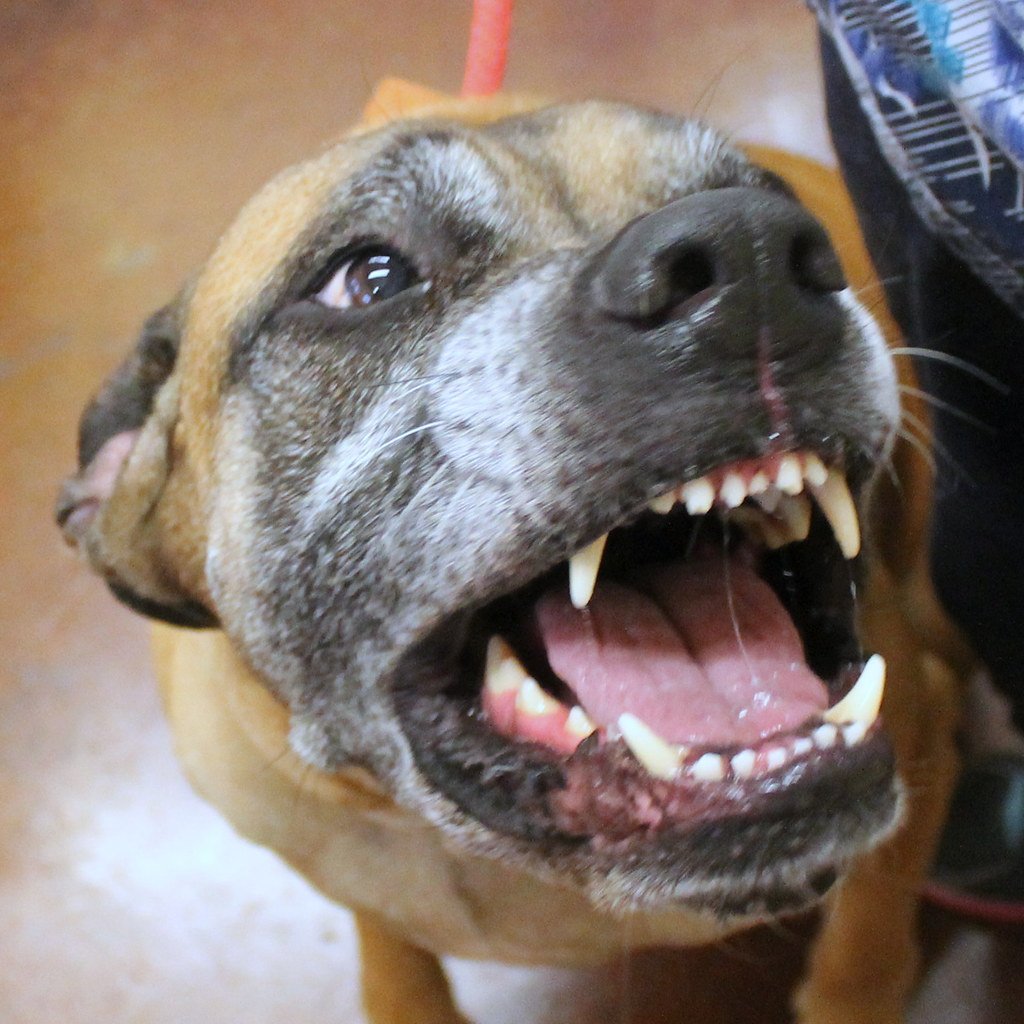We’ve all been there. You walk into someone’s house and their furry friend immediately becomes your shadow, nose pressed against your clothes like they’re conducting a forensic investigation. Your first instinct might be to push them away, pet them, or stand there awkwardly wondering if you smell strange. But here’s the thing that might surprise you: how you react in those crucial first moments could make or break your entire relationship with that dog.
Dogs’ most dominant sense is actually smell, which gives them a very different perspective on the world around them. When a dog starts sniffing you, they’re not being rude – they’re gathering critical information about who you are, where you’ve been, and whether you’re friend or foe. But your response to this natural behavior can either build trust or create tension that lasts long after the sniffing stops.
Never Back Away or Flee

The absolute worst thing you can do when a dog approaches to sniff you is turn tail and run. It sounds obvious, but this primal fear response can trigger something much more problematic than embarrassment. If you back away, it will suggest to your dog that you are being submissive, which completely changes the dynamic.
Dogs are incredibly perceptive about body language and energy. When you retreat, you’re essentially telling the dog that you see them as the dominant one in this interaction. Never back away – instead, give the “no” command and move forward toward him or her. This will show that you are the leader of the pack. Standing your ground shows confidence without aggression, which most dogs respect.
Don’t Immediately Reach Out to Pet Them

Here’s where most people get it completely wrong. The moment a dog starts sniffing, they assume it’s an invitation for petting. This couldn’t be further from the truth. A sniff does NOT equal consent to be pet!!! I CANNOT stress this enough! Just because a dog has approached you to sniff you, it does not mean they want to be pet.
Think about it from the dog’s perspective. They’re in information-gathering mode, trying to figure out who you are through scent. Your sudden movement toward them can be startling or threatening. Some dogs are shy or not very confident, so a hand coming at them can be scary. This is true for dogs who have never been abused or mistreated. The key is patience – let the dog complete their investigation before attempting any physical contact.
Avoid Staring or Making Intense Eye Contact

While the dog is conducting their sniff session, resist the urge to stare directly at them. In dog language, prolonged eye contact can be interpreted as a challenge or threat. Try not to move and don’t stare at the dog during this initial assessment period.
Instead, look away or focus on something else in the room. This shows the dog that you’re not a threat and gives them the space they need to feel comfortable. Some dogs are so sensitive to direct eye contact that it can trigger defensive behaviors even in otherwise friendly animals. By avoiding this mistake, you’re allowing the natural greeting process to unfold without adding unnecessary stress.
Never Push Them Away or Use Physical Force

It’s natural to feel uncomfortable when a dog is intensively sniffing you, especially in sensitive areas. But pushing, shoving, or using any kind of physical force to stop them is a recipe for disaster. Of course, punishment is not an option. How would you feel if someone slapped you every time you smiled at a stranger?
Physical corrections can escalate a situation from harmless investigation to defensive aggression in seconds. Dogs don’t understand why you’re suddenly being rough with them when they were just saying hello. Instead of force, use verbal commands or simply stand still and wait for them to finish. Remember, this behavior is completely natural for them.
Don’t Let Your Stress and Anxiety Take Over

Here’s something that’ll blow your mind: dogs can smell human stress and make decisions accordingly, study says. Research has shown that Dogs also sense fear and anxiety via their noses. When we are stressed or scared, we secrete adrenaline, the fight-or-flight hormone, which dogs detect even though we cannot smell it. When we are anxious, we also have increased heart rate and blood flow, which carries body chemicals to the skin surface where dogs can smell them more easily.
This creates a concerning feedback loop. Your stress makes the dog more cautious or potentially reactive, which makes you more nervous, which makes the dog even more unsettled. It’s important to maintain an upbeat attitude because dogs can read human emotions. If your dog thinks you’re angry or stressed, they’ll shut down and stop learning. Although this often looks like your dog is being stubborn or ignoring you, they’re simply reacting to your negative mood.
Avoid Offering Your Hand for Them to Sniff

This might contradict everything you learned as a kid, but the old “let the dog sniff your hand” advice isn’t always the best approach. We all grew up being told “hold out your hand, so the dog can sniff you.” I have always wondered where this practice came from, and I am sure there are a number of dogs that would prefer people to not do this. Dogs have an AMAZING sense of smell! They do not need a hand or fist to be flung out into their faces to learn about you. In fact, most dogs have already caught wind of you well before you get near them.
Not only is it unnecessary, but it can actually make some dogs uncomfortable. The hand approaching their face can seem threatening, especially to shy or nervous dogs. Instead of reaching your hand out for the dog to sniff, allow the dog to approach you, sniff your legs and feet/shoes. They’ll get all the information they need without you having to do anything.
Never Interrupt Their Natural Investigation Process

Dogs have an incredibly sophisticated sniffing process that we’re only beginning to understand. They have more than 100 million sensory receptor sites in the nasal cavity compared to 6 million in people, and the area of the canine brain devoted to analyzing odors is about 40 times larger than the comparable part of the human brain. When you interrupt this process prematurely, you’re essentially cutting off their primary way of understanding the world.
Smells, or scents if you prefer to call them that, inhaled by your pup through his twitching nostrils are translated into a rich source of information in his brain. Let them finish gathering this information naturally. Most dogs will disengage on their own once they’ve learned what they need to know about you. Patience during this phase often leads to a much more relaxed interaction afterward.
Conclusion

Understanding why dogs smell us and how to respond appropriately isn’t just about avoiding awkward moments – it’s about building positive relationships with our four-legged friends. These magnificent creatures experience the world primarily through their noses, and when we respect that process instead of fighting against it, everyone benefits.
The next time a dog approaches you for a sniff session, remember that you’re being given a privilege. They’re sharing their world with you, trying to understand who you are and whether you belong in their pack. By avoiding these common mistakes – backing away, reaching out too quickly, staring, using force, letting stress take over, forcing hand sniffs, or interrupting their process – you’re giving that relationship the best possible start.
Every dog encounter is different, and what works with one might not work with another. But these guidelines give you a solid foundation for those first crucial moments. The most important thing to remember is that patience and respect for their natural behaviors will take you much further than trying to control or rush the process.
What would you have guessed was the biggest mistake people make with sniffing dogs?

Andrew Alpin from India is the Brand Manager of Doggo digest. Andrew is an experienced content specialist and social media manager with a passion for writing. His forte includes health and wellness, Travel, Animals, and Nature. A nature nomad, Andrew is obsessed with mountains and loves high-altitude trekking. He has been on several Himalayan treks in India including the Everest Base Camp in Nepal.





